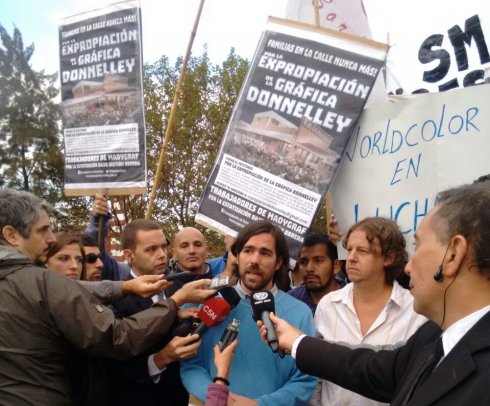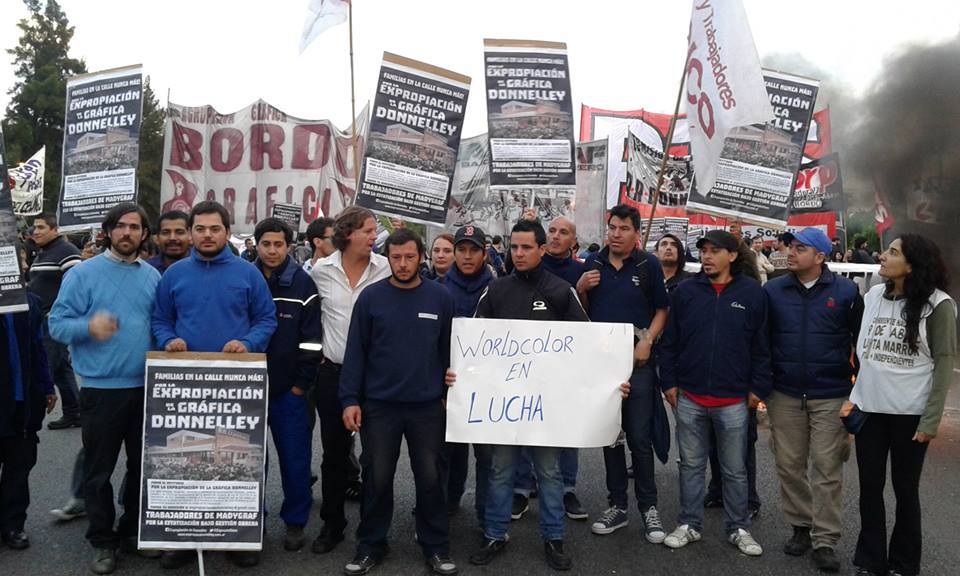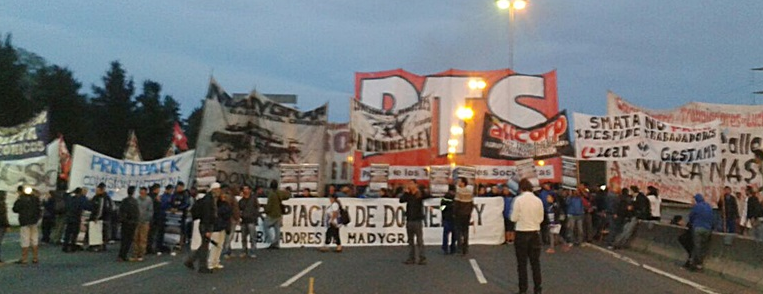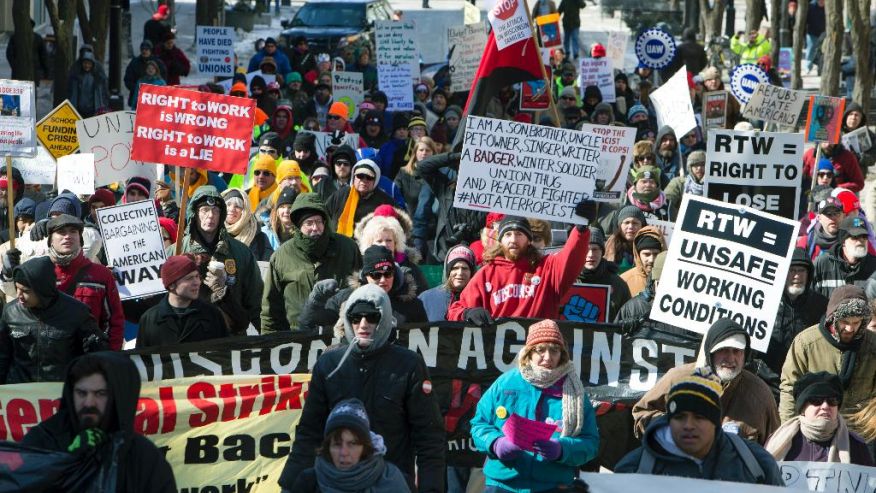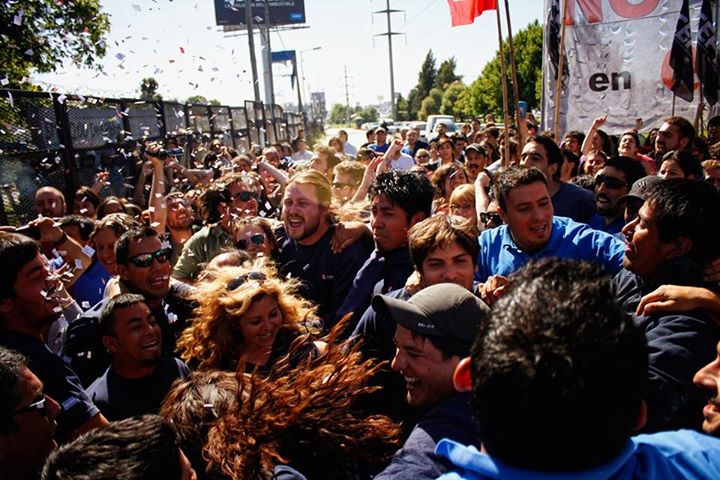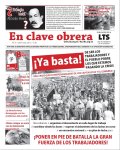South Corea
Ssangyong factory’s struggle
25/07/2009
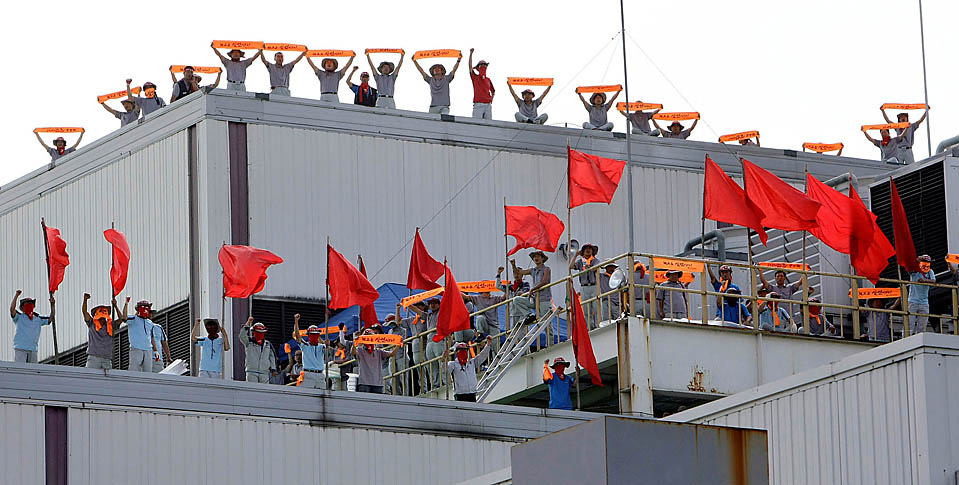
It is the biggest labour confrontation in South Korea in years.
This is an up-to-date report (as of Tuesday July 21) on the situation of the strike, by a worker from a nearby plant.
The following is a report by a worker from a nearby plant deeply involved in supporting the strike
When we finished night shift work at 5:30 this morning, we went to Pyeongtaek in front of the gate of the Ssangyong factory where the struggles were going on, just like yesterday.
At around 09:00 to 10:00 AM there were many buses loaded with riot police arriving around the gate, and approximately 20 cars for fire fighting arrived also.
While 2,000 riot police were trying to get near the paint plant, the workers responded with a slingshot and sometimes Molotov cocktails. That slingshot is too big and using bolt and nut as a bullet, so it’s distance is long enough ( 200 300m) to attack the enemy seriously.Tires that were set down in an effort to defend the plant were burning, and the black smoke covered all the sky above the factory.
The company cut off water and gas supplies and enforced a blockade on all material for workers from outside, even medical supplies. The company seems to have as a first strategy wearing people down to get workers out of the paint plant spontaneously.
After coming back from that battle site for today’s night shift, I heard news that the police helicopter is spreading tear gas against workrs who are fighting on the housetops.
As of 21 July, the KCTU (Korean Confederation of Trade Unions) declared a general strike mainly to support the Ssangyong strike from 22 to 24th Jul, and scheduled a nationwide labor rally on Saturday July 25th. And the KMWU (Korean Metal Workers Union), the main affiliated power of the KCTU, will be launching partial strikes on the 22nd and 24th in support of this strike and on going negotiations.
Hence, tomorrow more than 5,000 members will be at the central gate of Ssang yong, and fighting will take place again.
Pyeongtaek Strike Continues in South Korea
Loren Goldner (June 19)
A strike now completing its fourth week at Ssangyong Motors in Pyeongtaek, South Korea, remains a standoff as of this writing. The strike echoes in many ways the dynamic seen in the recent Visteon struggle in the UK and in battles over auto industry restructuring around the world. Involving, on the other hand, an outright factory seizure and occupation, and preparation for violent defense of the plant if necessary, it is the first struggle of its kind in South Korea for years.
The company was taken over three years ago by China’s Shanghai Automotive Industry Corporation, which holds 51% ownership. At the time, the Pyeongtaek plant had 8700 employees; it now has 7000. In February the company filed for bankruptcy, proposing a restructuring and offering the Pyeongtaek plant as collateral for further loans to re-emerge from bankruptcy. The court approved the bankruptcy plan, pending adequate layoffs to make the company profitable again.
The management strategy seems to have been a long-term whittling down of personnel combined with acquisition of technology for operations in China. Since the Shanghai Automotive takeover, there has been no new investment at Ssangyong Motors, and no new car model launched. (Korean prosecutors have raised questions over the legality of the technology transfer to China, since the technology in question was developed with Korean government subsidies, but to date no legal action has been taken.)
Workers at the plant responded with strikes against pending layoffs in April which accelerated into a full strike and plant takeover and occupation by 1700 workers on May 27 when the list of workers to be laid off was announced. The strike focused on three main demands: 1) no layoffs 2) job security for all and 3) no outsourcing. The company wants to force 1700 workers into early retirement and has fired 300 casuals.
The Ssangyong workers are organized in the Korean Metal Workers Union (KMWU) and have worked an average of 15-20 years in the factory. A regular worker earns a base pay of approximately 30,000,000 won (currently ca. $25,000) per year; a casual earns about 15,000,000 for the same work. (In Korea, the base pay is only part of the salary, which includes benefits –for regular workers–as well as significant overtime paid at a higher rate, often 10 hours a week and accepted, or even desired, by most workers as a necessary income supplement.)
As of mid-June, about 1000 workers were continuing the occupation, with wives and families providing food. About 500 workers not slated for layoff are staying at home, and about 1000 supervisory staff are scabbing, mainly maintaining machines, while no cars have been produced since the occupation began.
There has been to date little mass police presence in Pyeongtaek. This is due at least in part to to the current political crisis in South Korea following the recent suicide of ex-president No Mu Hyeon and subsequent large-scale demonstrations expressing growing outrage against the current right-wing government of Lee Myong Bak, demonstrations that are expected to gain momentum into July. The Lee government, elected in December 2007 on a program of high economic growth and now discredited by the world crisis, has been taken aback by the depth of outrage revealed in demonstrations mobilizing up to 1 million people. After the unleashing of riot police provoked further outrage and brought more people to the streets, the government is unwilling to risk further disenchantment by an assault on the Pyeongtaek factory.
On June 16, a large anti-strike rally of more than 1500 people was held outside the factory gates. The rally was attended by the 1000 supervisory scabs, 200 hired thugs and 300 workers not on the layoff list and not supporting the strike. 400 riot police stood by, doing nothing, and finally declared the scab assembly illegal.
During the scab rally, about 700-800 workers from nearby factories, such as the Kia Motor company, came to defend the Ssangyang plant, in part in response to a text message tree of the KMWU.
The occupying workers have made plans for armed defense against any police attempt to recapture the plant, stocking iron pipes and Molotov cocktails. As a further fallback plan, they intend to concentrate in the paint department, where the flammable materials (in their estimate) will dissuade the police from firing tear gas cannisters and setting off a conflagration.
According to one activist critical of the role of the union, the KMWU seems to remain in control of the strike. In contrast to role of the unions in the Visteon struggle in the UK and in the dismantling of the US auto industry, the KMWU has thus far supported the illegal actions of seizing the plant and preparing for its armed defense. On the other hand, it has been concentrating on the demand for no layoffs and soft-pedaling the demands for job security for all and against out-sourcing.
The core occupation of the plant is powered by 50 or 60 rank-and-file groups of 10 workers each, who in turn elect a delegate (chojang) for coordinated action. According to the same critical activist, these chojang are the most combative and class-conscious workers.
The outcome of this strike remains up in the air. It benefits from a momentarily favorable political climate, which has put the Korean government on the back foot, but it is up against the deep crisis of the world auto industry and the world economic crisis generally. The nearby Kia Motor Company plant is itself in the middle of critical negotiations for crisis measures, and GM-Daewoo is being hit with the world reorganization of GM. The company strategy, as in the case of Visteon, seems to be at best slow attrition (already underway since 2006) or even an outright closing of the plant. The Ssangyong Motor struggle may light a fire in the Korean auto industry and beyond, or, more likely, be strangled, slowly or not so slowly, in its current isolation.
Korean Sanggyong Strike Up Against the Wall
By Loren Goldner
July 17
(The following article reports “just the facts”, based on communications from workers and other activists involved in the struggle.)
The Ssangyong Motors strike in Pyeongtaek, South Korea (near Seoul), is now in its eighth week, and the situation of the strikers is increasingly dire.
To briefly reiterate the overall situation (following on my earlier report of June 19):
Ssangyong Motors is 51% owned by China’s Shanghai Automotive Industry Corporation. In February the company filed for bankruptcy, proposing a restructuring and offering the Pyeongtaek plant as collateral for further loans to re-emerge from bankruptcy. The court approved the bankruptcy plan, pending adequate layoffs to make the company profitable again.
Following job actions through the spring in anticipation of the layoffs, the current strike began on May 27 when the company announced layoffs and forced retirement of 1700 out of 7000 workers, with immediate additional firings of 300 casuals. The workers slated for layoff immediately occupied the plant, demanding no layoffs, no casualization and no outsourcing. The KMWU (Korean Metal Workers Union) supported the occupation but tried to channel negations strictly around the question of layoffs.
As of mid-June, about 1000 workers were continuing the occupation, with wives and families providing food. The government and the company bided their time, in part because of a broader political crisis of the hard-right Lee government which militated against any immediate massive police and thug attack, But two weeks later, they felt confident to go on the offensive. The workers, for their part, had armed themselves with iron crowbars and Molotov cocktails.
On June 26th-27th a serious government and employer attack began , as hired thugs, scabs recruited from the workers not slated for firing, and riot police tried to enter the factory. They secured the main building after violent fighting in which many people were injured. The occupying workers retreated to the paint sector, which was part of a defensive plan based on the belief that police would not fire tear gas canisters into the highly flammable area. (In January, five people in Seoul died in another fire set off during a confrontation with police, sparking weeks of outrage.).
The following day, the company issued a statement to the effect that there had been enough violence, but in reality in recognition of the tenacious worker resistance, and police and thugs were withdrawn. The company urged the government to involve itself directly in negations. All water in the plant was nonetheless cut off at the end of June.
Following a court order, the forces of repression struck again on July 11 as the riot police moved to seize the factory area with the exception of the paint sector, and encircled the entire factory.
Ever since the attack of the 26th-27th attack aimed at isolating Ssangyong’s struggle and breaking the strike, solidarity actions outside the plant were attempting to build broader support. These included a street campaign, mainly from family organizations in the center of Seoul and Pyeongtaek areas, a 4-hour general strike by the KMWU during which metal workers from nearby plants rallied in front of Ssangyong factory gate; on July 4th, and July 11 the KCTU (Korean Confederation of Trade Unions) held nationwide labor rallies in support of the Ssangyong’s struggle. These actions were however poorly attended and the leadership of the KMWU has hesitated in declaring an all-out strike in response to the attacks on the plant. Activists think the KMWU and KCTU leaderships are more preoccupied with upcoming union elections. (927 activists also held a one –day hunger strike in the center of Seoul on July 11.) (From my experience in Korea over the past four years, these are largely ritual actions which rarely influence the outcome of a struggle.)
Finally, on July 16, 3,000 KMWU members gathered to support the Ssangyong strike in front of the Pyeongtaek City Hall. When they tried to move to the factory after the rally, they were blocked by police and 82 workers were arrested on the spot.
All in all, chances for a serious generalization of the struggle to other factories look remote. Activists on the scene feel that even if the KMWU called a general strike, only a few districts would follow it. The Hyundai auto workers are in the midst of wage negotiations themselves. Nearby supplier plants have already gone through structural adjustment and are not likely to mobilize.
